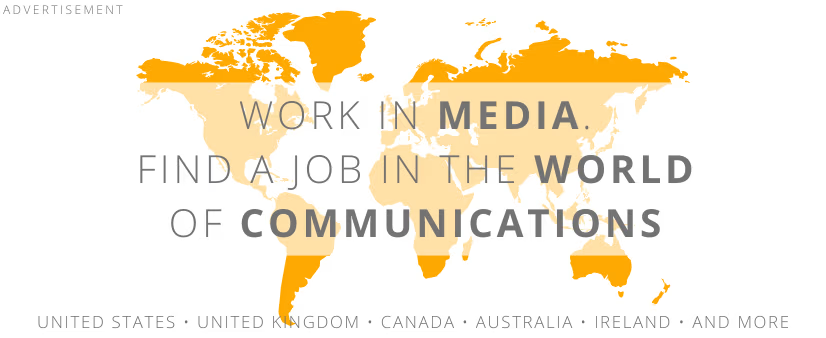 illustration: Bing AI
illustration: Bing AIEuropeans are spending less time in front of the TV, according to the 2024 report “Television Audience Trends 2024” published by the European Broadcasting Union. Analysts from the EBU Media Intelligence Service report that in 2023, the average daily TV viewing time was 3 hours and 16 minutes, an 18-minute drop compared to 2018. For the youth group (15–24 years old), the situation is even more striking – the average time fell to just 1 hour and 12 minutes, 28 minutes less than five years earlier.
These changes highlight the significant decline in interest in traditional television among younger age groups. In nine countries, the average viewing time among young people dropped below 30 minutes per day. Five years ago, no country recorded such results. In 2020, only four countries reported similar results, indicating a rapid acceleration of this trend.
In countries like the Netherlands and Sweden, young people increasingly prefer streaming platforms over traditional TV channels. The popularity of services like Netflix, YouTube, and TikTok is growing among the youth, who favor short, dynamic content available on demand. This shift has significant implications for broadcasters trying to adapt to new viewer preferences.
Examples illustrating changing habits:
- Rising subscriptions to platforms like Netflix and Amazon Prime Video.
- Increased viewership of short video content on mobile devices.
TV Reach: Declining Dominance
In 2023, the weekly TV reach was 80%, a drop of 5.8 percentage points compared to 2018. Among youth, the reach was significantly lower – only 53.6%, a decrease of 14.4 percentage points. These figures clearly show that young viewers are moving away from traditional forms of television in favor of new media.
Weekly TV Reach (2018–2023)
| Age Group | 2018 | 2023 | Change (%) |
|---|---|---|---|
| All viewers | 85.8% | 80.0% | -5.8 |
| Youth (15–24) | 68.0% | 53.6% | -14.4 |
The decline in reach among youth is particularly noticeable in countries like Finland and Norway, where only about half of young people watch TV weekly. In Greece, where TV reach in this age group was above 70% a few years ago, it fell to less than 50% in 2023.
Examples of changing reach:
- Declining viewership of traditional news among young viewers.
- Increased popularity of social media as a news source.
Live Viewing and Time-Shifted Content
Most Europeans still watch live TV, but time-shifted viewing is growing in importance. In 2023, 12% of total viewing time was spent on content watched outside real-time. Among youth, this share was 16%, reflecting greater flexibility in media consumption.
Share of Live and Time-Shifted Viewing in 2023
| Viewing Type | All Viewers (%) | Youth (%) |
|---|---|---|
| Live | 88% | 84% |
| Time-Shifted | 12% | 16% |
In countries like the UK and Denmark, where technology allows widespread access to catch-up TV services, youth increasingly watch programs at their convenience. Data from the report shows that in nine countries, an average of 20% of TV viewing time consisted of time-shifted content. Five years ago, such a share was recorded in only one country.
Examples of trends:
- Increased popularity of catch-up TV platforms like BBC iPlayer in the UK.
- Share of content viewed after broadcast exceeding 25% in Sweden.
Public Television Holding Steady
Despite the overall decline in viewership, public television maintains a relatively stable market share. In 2023, the average daily market share for PSM was 23% among all viewers and 17% among youth. This indicates that public television performs better in retaining its audience compared to competitors.
List of most popular PSM program genres:
- News and information magazines dominating in many markets.
- Entertainment programs like game shows and reality TV.
- Films and series, which are highly popular in Western Europe.
The report highlights that in 48% of analyzed countries, leading public TV channels rank first in viewership. For example, in France, five out of the ten most-watched programs are public TV productions. Similar results were observed in Germany, where PSM programs dominate evening time slots.
* * *
The “Television Audience Trends 2024” report was prepared by the European Broadcasting Union (EBU) based on data from national TV audience measurement systems (TAM). The analysis covers the years 2018–2023 and includes both live viewing and time-shifted viewing (up to 7 days after live broadcast). The methodology relies on aggregated data from 42 markets, excluding those with differences in definitions or methods. The report is supplemented by data from partners such as Glance, providing a comprehensive understanding of changing trends.
The full report is available for free at
https://www.ebu.ch/publications/research/membersonly/report/audience-trends-television
COMMERCIAL BREAK
New articles in section Media industry
Advertising market 2025. Poland, Europe and the World
Marcin Grządka
The global advertising market is growing by 8.8% in 2025 and will reach a value of 1.14 trillion dollars. The industry result in Europe records slightly lower dynamics, at the level of 5.8%. In this comparison, Poland performs clearly above the average. We will record an increase of 8.9% this year and a value of 18.56 billion PLN - estimates WPP Media in the annual report "This Year Next Year".
The print media market 2025. Three global trends
Krzysztof Fiedorek
The market value is 359.53 billion dollars, yet the erosion is visible to the naked eye. The decline for newspapers will amount to -2.3 percent. Despite this, print retains strength: it generates 76 percent of subscription revenues and enjoys 82 percent consumer trust. The future of the industry is defined by hybrid strategies and niche specialization.
Journalism in the age of AI. Why people prefer humans over machines
Krzysztof Fiedorek
Only 12% of people accept news created solely by AI, while 62% prefer those written by humans. At the same time, only 19% notice labels indicating the use of artificial intelligence, while younger audiences ask AI to explain the content to them. These are the findings of the Reuters Institute report on artificial intelligence in media.
See articles on a similar topic:
Social Media in 2025. Generational Differences Are Crystal Clear
KFi
More and more people are saying they’re cutting back on time spent on social media. And while this doesn’t mean a mass exodus, the trend is clear. According to latest GWI report, 31% of users said they had reduced their social media use. There’s also a subtle frustration.
Pseudo-democracy and Media - A Few Reflections
Grzegorz D. Stunża
Every four years, citizens are served elections, which are certainly not free. Polls replace part of the electoral process, shaping opinions and voting preferences.
COVID-Skeptics in Media. Dentsu Agency Study
BARD
A significant presence of COVID-skepticism, which downplays the pandemic or focuses on conspiracy theories, accounts for approximately 8% of online content related to the coronavirus. The primary sources of knowledge about COVID-19 and the current situation are the internet, social media, television, and increasingly, family and friends.
Business Communication and 25 Years of PR Evolution. ITBC Report
KFi
How has technology transformed the way companies communicate with clients? What connects speed of response, creativity, and crisis resilience? The ITBC Communication report reveals how communication has evolved over the past 25 years and what defines the future of business relationships.






























